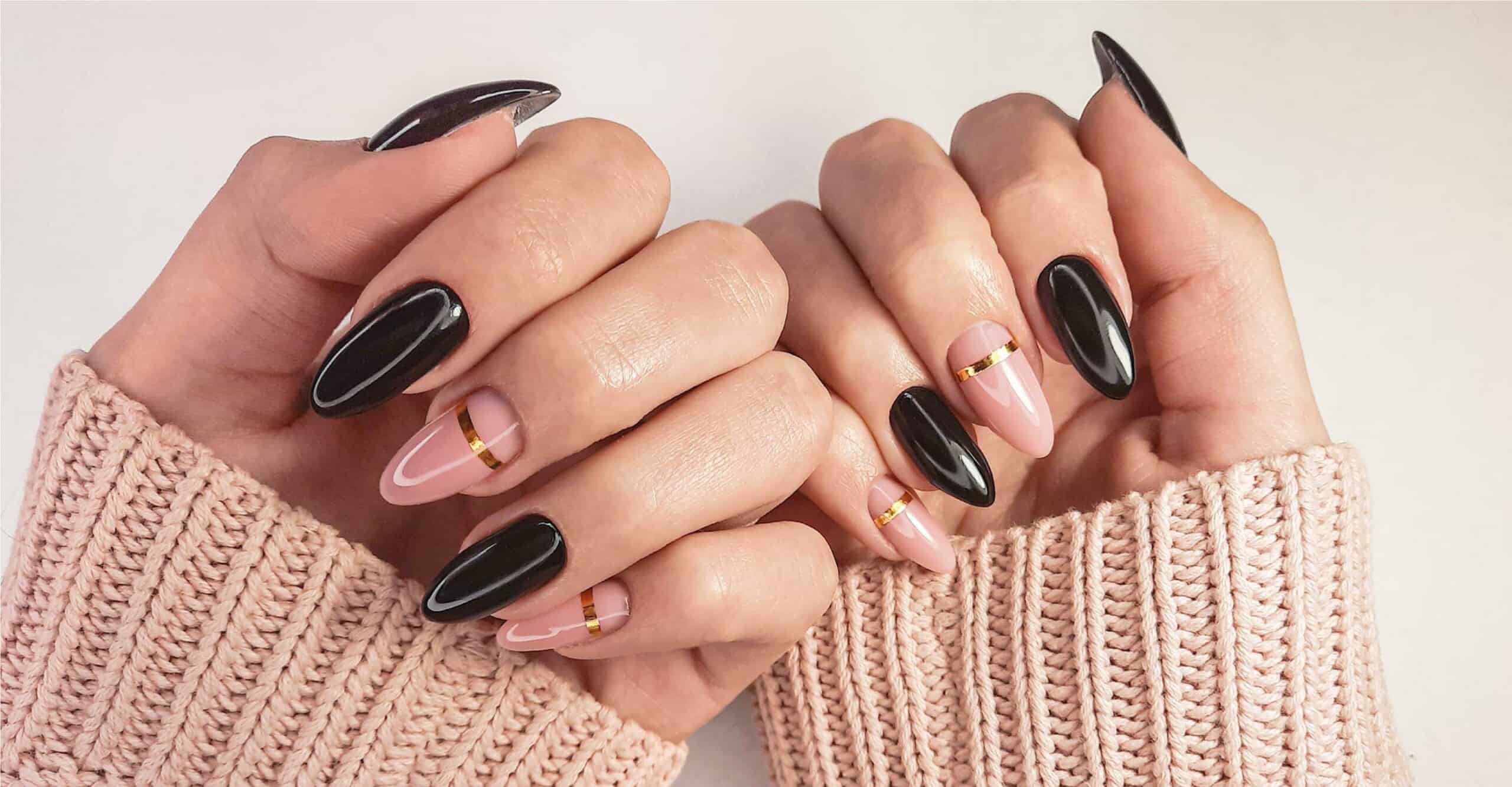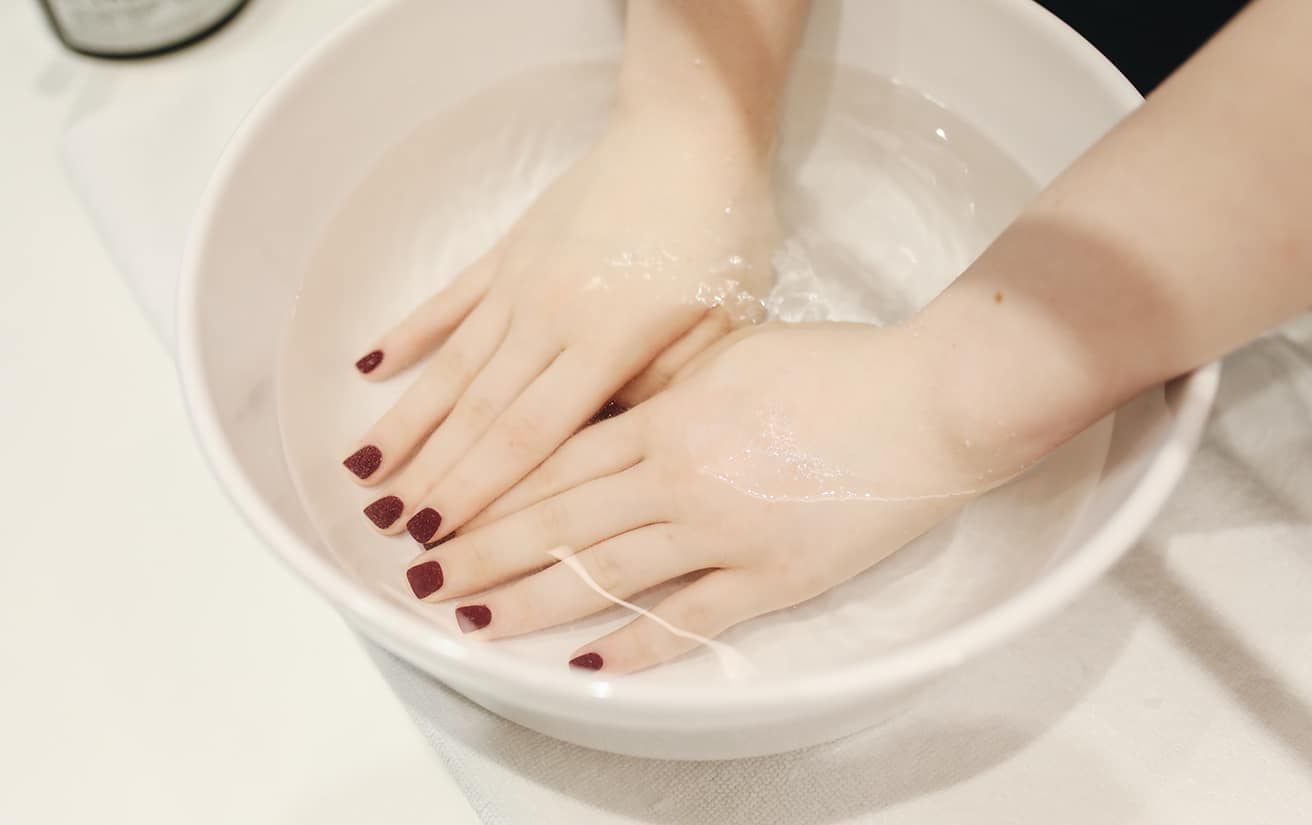How Often Should You Get a Pedicure?
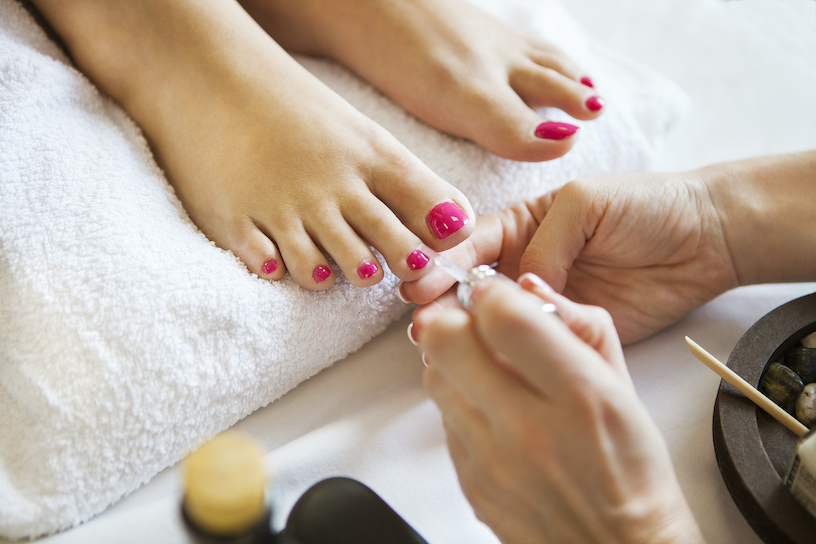
You should get a pedicure, also known as a pedi, once a month. That’s the amount of time it usually takes for dead skin cells to shed. Pedicurists can remove dead skin cells with exfoliation techniques.
In addition to helping you keep your skin soft and smooth, monthly pedicures can have other therapeutic benefits. This post covers what a pedicure is, its benefits, and how to take good care of your feet.
How Often Should You Get a Pedicure?
For basic maintenance, as a general rule, you should get a pedicure once a month. Doing so aids in the removal of dead skin cells when new cells regenerate, which usually happens every four weeks.
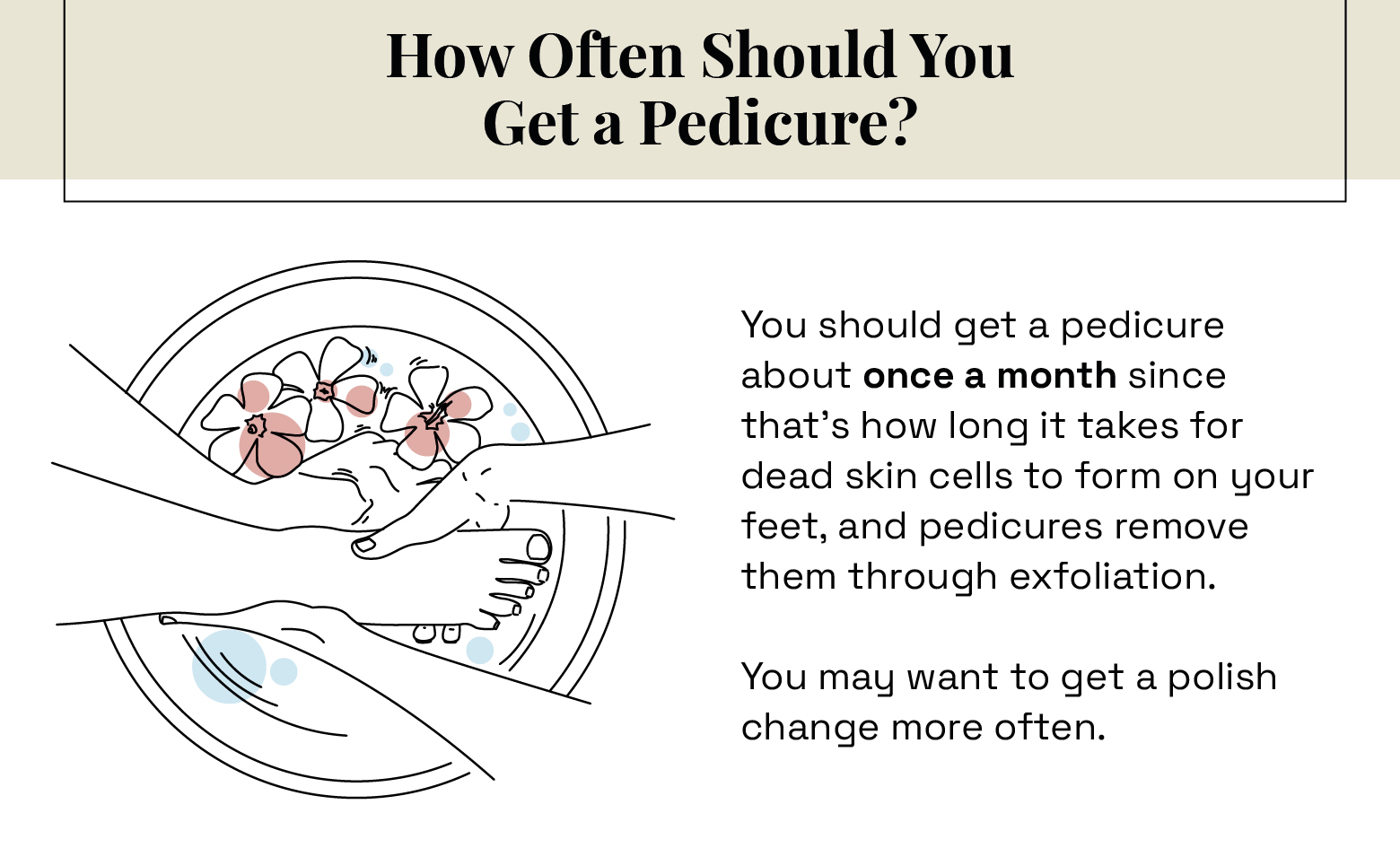
While regular pedicures help keep your feet presentable, your nail polish may begin to chip a couple weeks after. You might want to get polish changes or touch-ups more frequently.
What Is a Pedicure?
Similar to a manicure, which treats your hands and fingernails, a pedicure treats your feet cosmetically. A basic pedicure involves removing dead skin, softening hard skin, like calluses, and shaping your toenails. The cost of a pedicure will vary based on your location, the salon, and the type of pedicure.
The basic steps of a professional pedicure include:
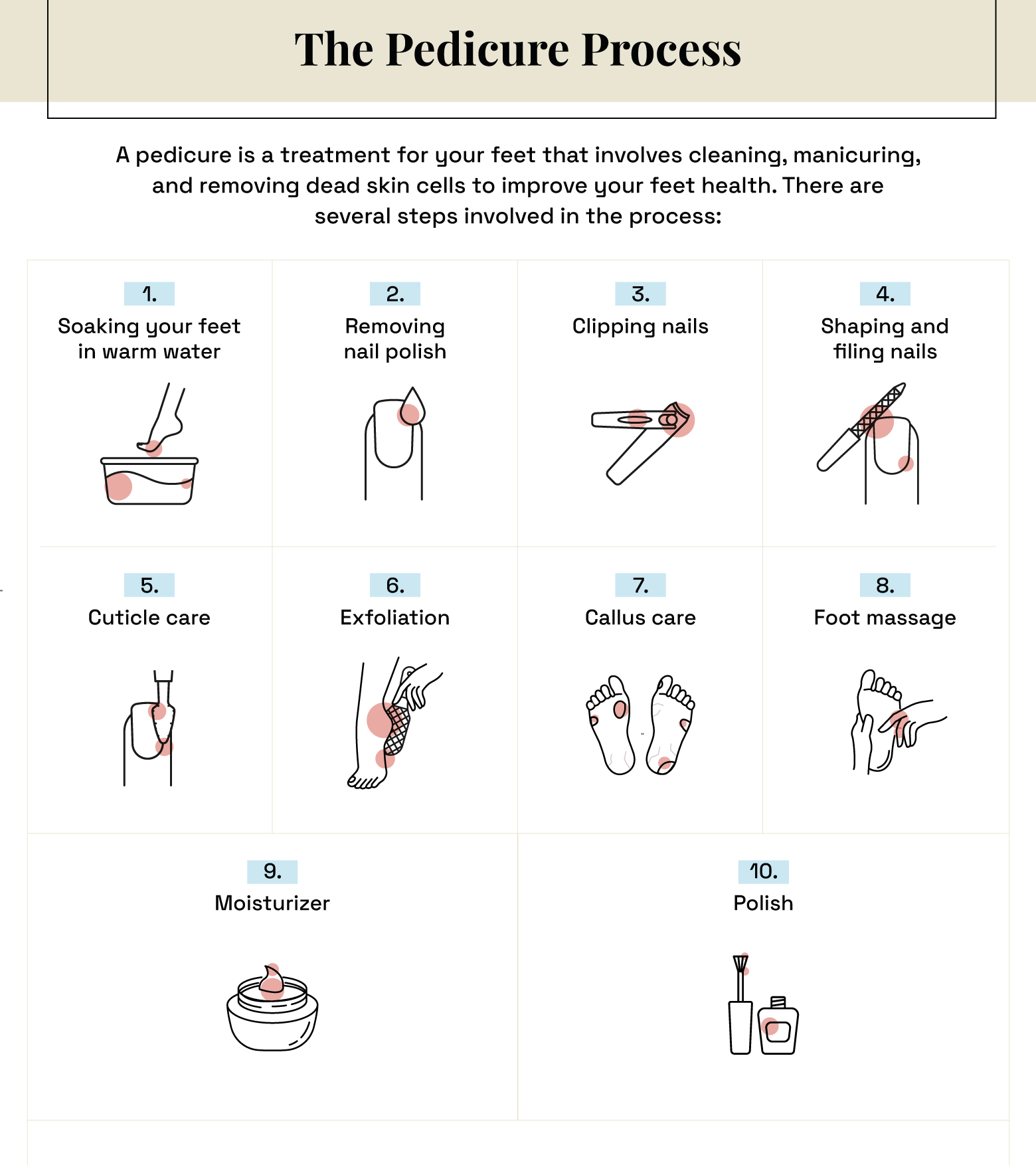
- Soaking: Your pedicurist will usually have you soak your feet in warm water using a foot tub to clean and soften them for treatment.
- Removing nail polish (if necessary): If you have old nail polish on your toes, your pedicurist or nail technician will remove it before working on your nails and applying a fresh coat.
- Nail clipping: Your technician will cut your nails to prepare them for shaping. Your technician knows the length to which your nails should be cut so that they aren’t too short, which may help prevent ingrown nails.
- Nail shaping and filing: Your pedicurist gives your feet some nail care by shaping and filing your nails with more precise tools to give them a better shape than you could get with just clippers.
- Cuticle care: Your technician will cut and clean your cuticles to keep your nails looking neat.
- Exfoliation: Exfoliation, with a pumice stone, scrub, or other techniques, helps remove dead skin and dry skin, and softens hard skin, like corns and calluses.
- Callus care: If you have calluses, corns, or areas of hard skin, your technician will focus on reducing and removing them.
- Foot massage: Once your feet are treated, your pedicurist will massage your feet to reduce pain, improve blood circulation, and help you relax. Some nail salons will even have you sit in a massage chair, too.
- Moisturizer: A final step in the skin treatment, your pedicurist will apply moisturizer to your feet to help hydrate your skin and seal in moisture.
- Polish (not required): If you want your toenails painted, your nail technician will paint them with the color of your choice.
There are different types of pedicures and treatments you can choose from. In addition to the classic or basic, you could also get:
- A French pedicure, which follows all the steps of a full pedicure, except your toenails are painted with a white band on the tip, instead of a full color.
- A gel pedicure, which uses a gel-based polish and top coat, cured with UV light technology, to make your nail color durable and long-lasting.
- A paraffin pedicure, which involves covering your feet in paraffin wax to promote circulation and soften your skin.
A full pedicure can take anywhere from 45 to 90 minutes depending on the type of pedicure you get. Some salons will let you know ahead of time how long you can expect it to take. Your treatment might take a little longer if you decide to get polish too.
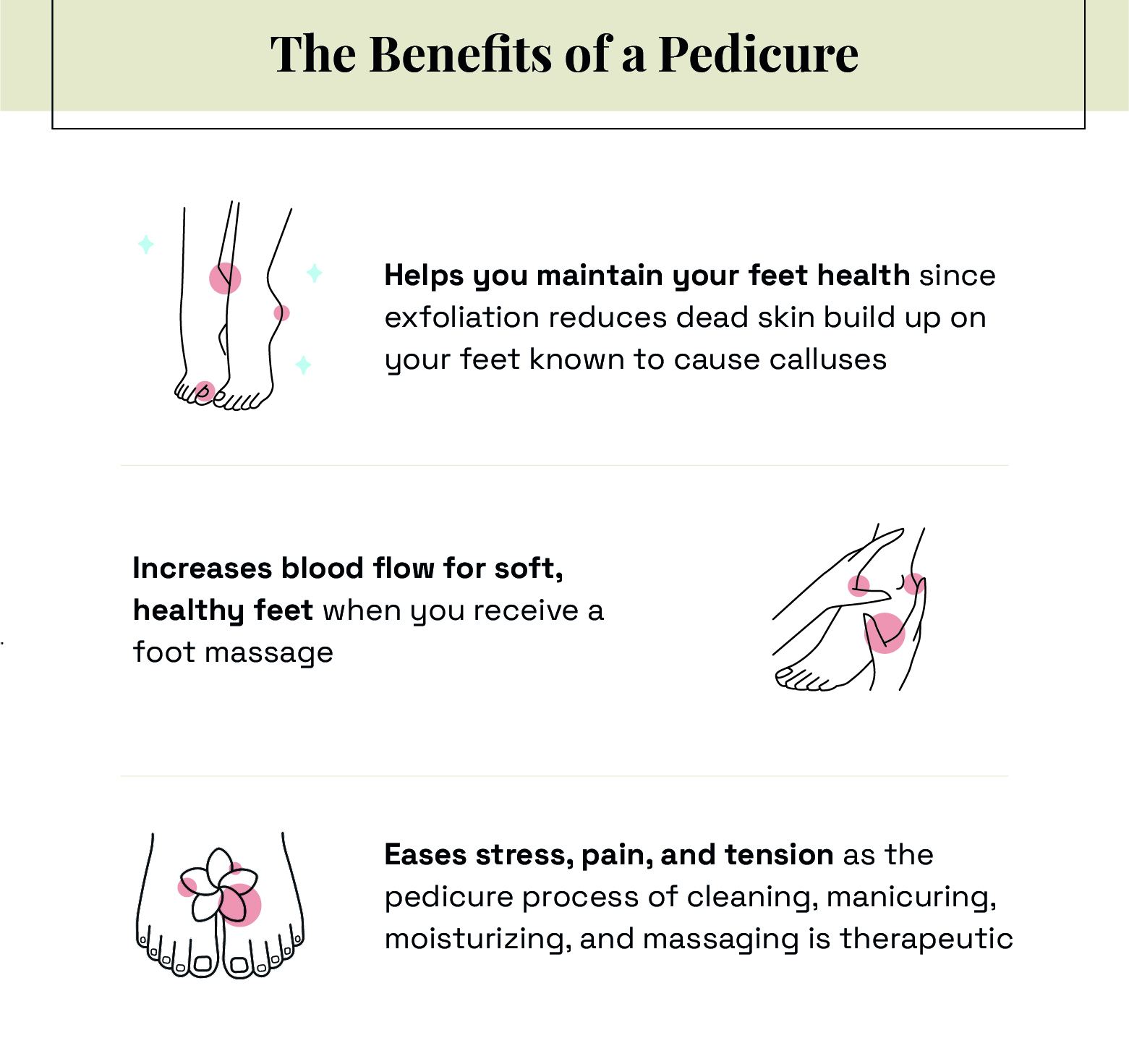
In addition to making your feet look beautiful, getting a pedicure has other benefits:
- Foot health: Having your feet exfoliated regularly helps you avoid dead skin buildup, like calluses, and maintain better foot health and hygiene.
- Increased blood circulation: The foot massage your pedicurist gives you can help with increased blood flow, making your feet softer and healthier.
- Stress reduction: Foot massages and other relaxing activities can help relieve stress, as well as pain or tension.
When should I avoid pedicures?
While pedicures can be very beneficial, you might want to avoid your monthly pedicure if you’re experiencing the following issues:
- Discolored toenails, avoid getting your nails painted during a pedicure.
- Diabetes, a pedicure can increase your risk of infection and possibly cause your blood sugar to spike, leading to issues later on.
- Ingrown toenails, a fungal infection, severe foot pain, or open cuts, you might want to visit a podiatrist or seek medical guidance first to avoid potentially spreading either infections to other salon goers or making the issue worse.
- If you shaved your legs right before your pedicure appointment, you might want to reschedule to avoid risking an infection.
- If you are immunocompromised, you might risk infection.
Pedicure safety tips
Like any cosmetic procedure, getting a pedicure can involve some risks. Here are some safety tips to ensure you give your feet the best pampering experience:
- Schedule your pedicure as soon as the salon opens. That’s when the tubs and tools are the cleanest, since they haven’t been used on other clients all day.
- Request an exfoliating foot scrub instead of using razors. Razors can make you more susceptible to infections and hurt your feet, so exfoliating scrubs are a gentler, but effective, alternative.
- Have your toenails cut straight across. If your nail technician cuts them in a rounded shape, you might end up with ingrown toenails.
- Do not shave or wax your legs the day before your pedicure. Freshly shaved or waxed skin is more susceptible to infections.
A pedicure can be a welcome treat to practice self-care, pamper your feet, or treat minor foot problems. Ready to book your next pedicure appointment? Find the best beauty professional in your area on StyleSeat.


